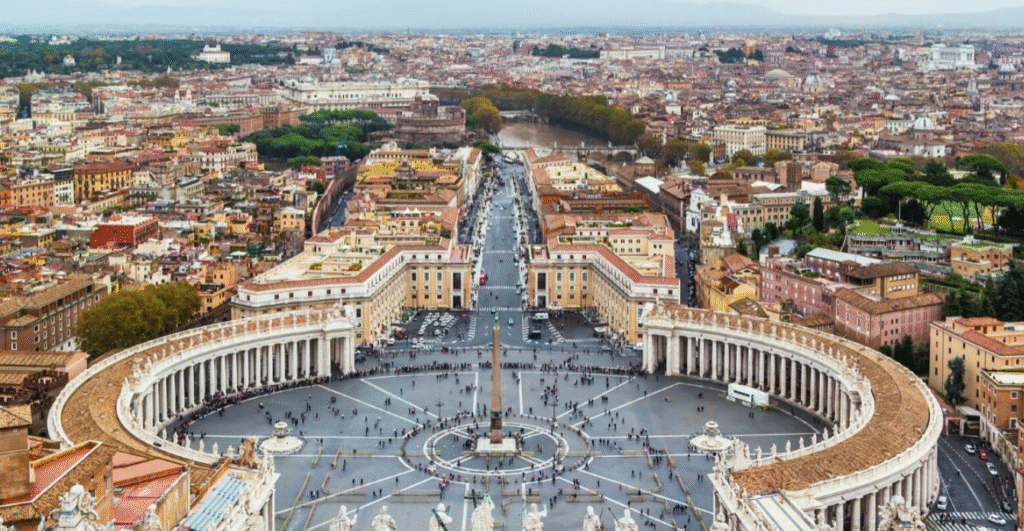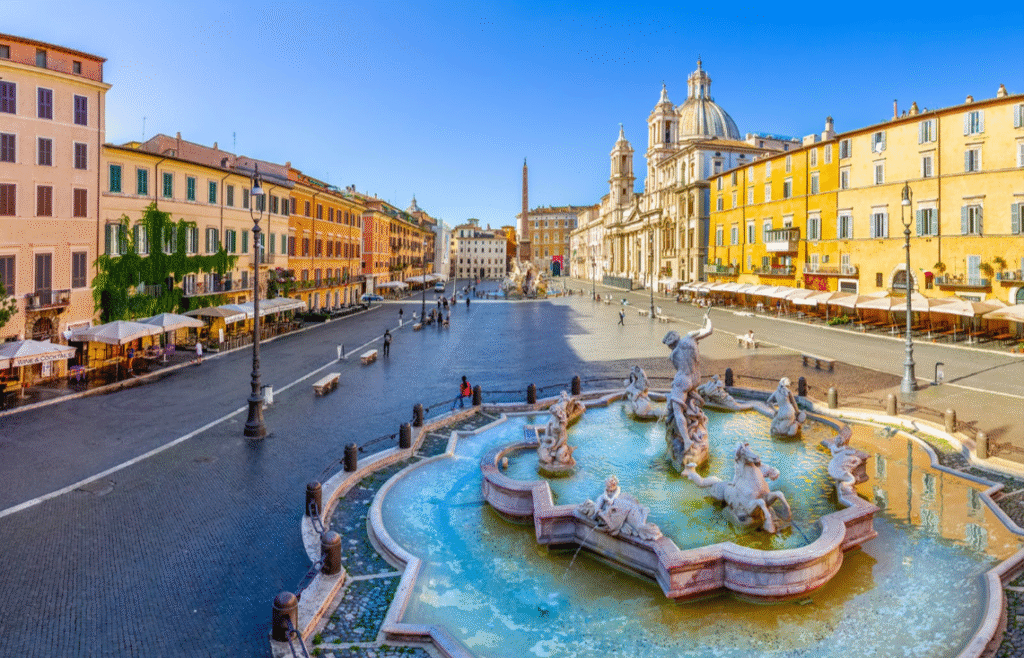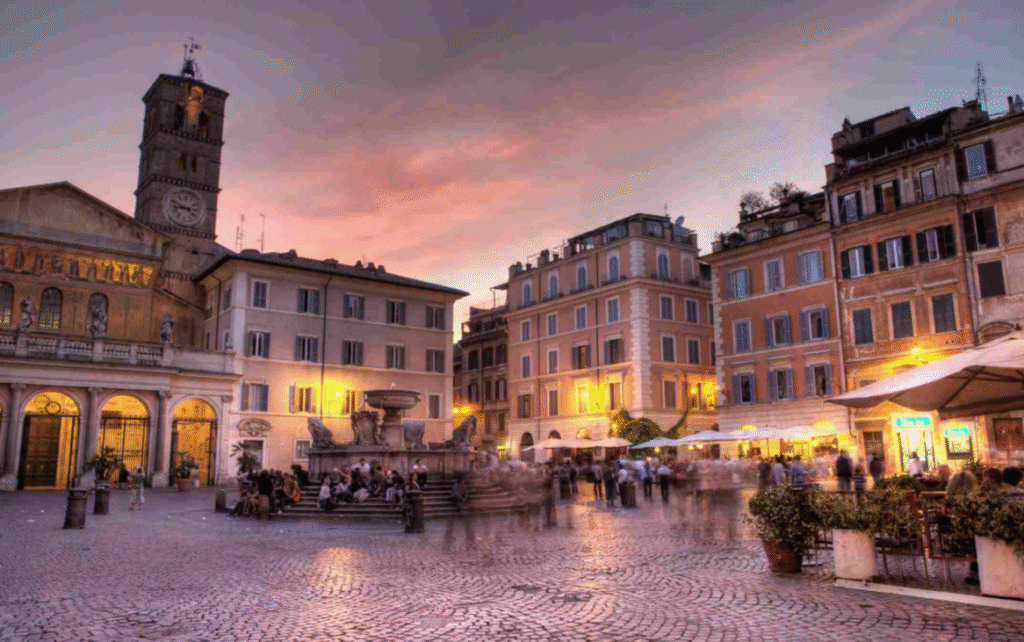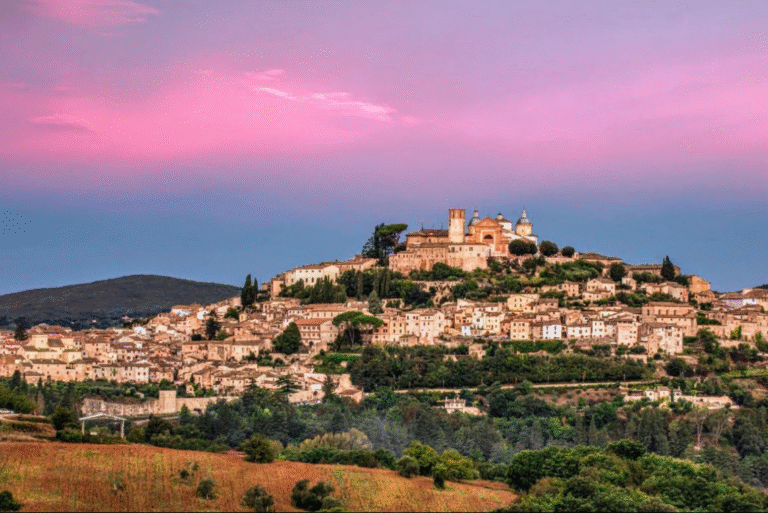Rome Eternal: Walking Through the Ancient Wonders and Vibrant Streets of Italy’s Capital
Rome, the Eternal City, is a destination where history, art, and culture intertwine to create an unparalleled experience. As the heart of the Roman Empire and the center of Western civilization for centuries, Rome is a city where ancient ruins coexist with Renaissance masterpieces, and bustling piazzas overflow with life. Whether exploring the grandeur of the Colosseum, marveling at the intricate beauty of the Vatican, or wandering through charming cobblestone streets, Rome offers an unforgettable journey through time. Every fountain, alleyway, and monument tells a story, making Rome not just a city but a living museum. Walking through its streets is like stepping into history, where every corner reveals another chapter of a past that has shaped the world.

The Ancient Heart of Rome
Rome’s foundation is built upon the ruins of its glorious past, with archaeological treasures scattered throughout the city. The Colosseum, the world’s most famous amphitheater, stands as a testament to Rome’s grand imperial history. Built in 80 AD, it once hosted gladiator battles, wild animal hunts, and spectacular performances for thousands of spectators. Today, walking through its vast corridors and gazing at the remnants of the arena evokes the power and drama of ancient Rome.
Nearby, the Roman Forum offers a glimpse into the political, religious, and social life of the empire. This sprawling complex of temples, basilicas, and arches was once the center of daily activity, where senators debated laws, merchants conducted business, and emperors celebrated victories. Among the ruins, the Arch of Titus and the Temple of Saturn stand as symbols of Rome’s imperial legacy.
The Pantheon, one of the best-preserved monuments of ancient Rome, continues to inspire awe with its massive domed ceiling and grand columns. Originally built as a temple to all gods, the Pantheon’s harmonious proportions and engineering brilliance remain unmatched even today. Its oculus, an open circular window at the dome’s center, allows sunlight to stream in, creating a mystical atmosphere that changes with the time of day.
A short walk away, the Palatine Hill, considered the birthplace of Rome, offers stunning views over the Forum and the city beyond. According to legend, this is where Romulus founded Rome in 753 BC. Exploring the ruins of imperial palaces and gardens atop the hill provides insight into the lavish lifestyles of Rome’s emperors.

The Vatican: A Spiritual and Artistic Marvel
Within the heart of Rome lies the Vatican City, the world’s smallest independent state and the center of Catholicism. St. Peter’s Basilica, an architectural masterpiece, dominates the skyline with its magnificent dome designed by Michelangelo. Inside, visitors can admire Michelangelo’s Pietà and the opulent interior, filled with intricate mosaics and sculptures that reflect centuries of religious devotion and artistic excellence.
The Vatican Museums house one of the most impressive collections of art in the world, with highlights including the Raphael Rooms and the Gallery of Maps. However, the true masterpiece of the Vatican is the Sistine Chapel, where Michelangelo’s frescoes adorn the ceiling and depict scenes from the Book of Genesis. The sheer scale and detail of the artwork leave visitors in awe, as they gaze upon one of the greatest artistic achievements of all time.
Beyond the grandiosity of St. Peter’s Square and the Vatican’s treasures, the surrounding streets of Borgo Pio offer a quieter escape, with charming trattorias and artisan shops where visitors can enjoy an authentic Roman meal away from the crowds.

The Piazzas and Fountains of Rome
Rome’s vibrant soul can be found in its piazzas, where locals and visitors gather to soak in the city’s atmosphere. Piazza Navona, one of the most beautiful squares in Rome, is a lively space surrounded by Baroque palaces, street artists, and the stunning Fountain of the Four Rivers, designed by Bernini. The square’s energy changes throughout the day, from peaceful morning strolls to lively evening gatherings under the glow of historic lamps.
A short walk away, the Trevi Fountain stands as one of the city’s most iconic landmarks. Designed in the 18th century, this grandiose fountain features a dramatic sculptural composition of Neptune and mythical sea creatures. Tradition dictates that tossing a coin into the fountain ensures a return to Rome, making it one of the most popular rituals for visitors.
The Spanish Steps, another famous landmark, offer a perfect place to pause and take in the city’s beauty. At the top, the Trinità dei Monti church provides a stunning view over the rooftops of Rome. During spring, the steps are adorned with colorful azaleas, adding to their charm and appeal.

The Hidden Streets and Local Charm
Beyond the grand monuments, Rome’s true magic is found in its hidden streets and lesser-known neighborhoods. Trastevere, a charming district across the Tiber River, is a favorite among locals and visitors alike. Its narrow cobblestone alleys, ivy-clad buildings, and bustling piazzas create an atmosphere of old-world charm. In the evenings, the district comes alive with lively trattorias, serving classic Roman dishes such as cacio e pepe, amatriciana, and supplì.
The Jewish Ghetto, one of the oldest in Europe, is another fascinating area to explore. With its historic synagogues, Kosher bakeries, and traditional Roman-Jewish cuisine, it provides a unique glimpse into the city’s diverse heritage. The ruins of the Portico of Octavia and the Teatro di Marcello, often overshadowed by more famous landmarks, add to the area’s rich historical tapestry.
For a peaceful escape, the Aventine Hill offers a quiet retreat with stunning panoramic views from the Orange Garden (Giardino degli Aranci). The keyhole of the Priory of the Knights of Malta offers a perfectly framed view of St. Peter’s Basilica, a hidden treasure that rewards those who seek it out.

Roman Cuisine: A Feast for the Senses
Rome’s culinary scene is a feast for the senses, deeply rooted in tradition and simplicity. Every meal tells a story of history and passion, from the bustling markets of Campo de’ Fiori to the elegant dining rooms of historic restaurants.
A visit to Rome is incomplete without trying its legendary pasta dishes. Cacio e pepe, a simple yet flavorful combination of Pecorino Romano cheese and black pepper, embodies the essence of Roman cuisine. Carbonara, made with eggs, guanciale, and Pecorino, offers a rich and creamy delight, while amatriciana, with its tomato and cured pork sauce, is a favorite among locals.
For street food lovers, pizza al taglio (pizza by the slice) is a must-try, offering endless variations of toppings on crispy, airy crusts. Artisanal gelato, available in flavors ranging from classic pistachio to seasonal fruit sorbets, provides the perfect way to cool off on a warm Roman afternoon.






